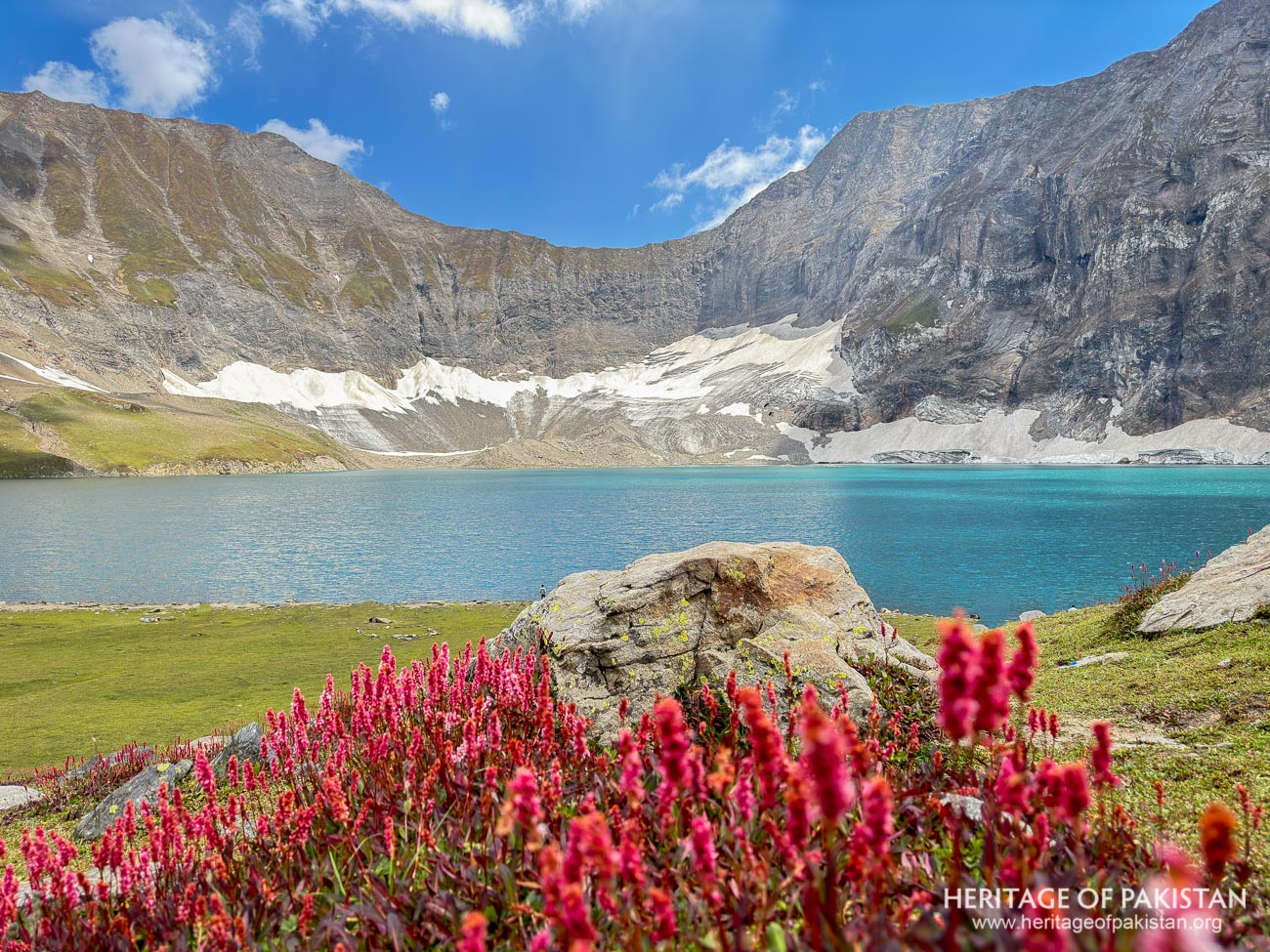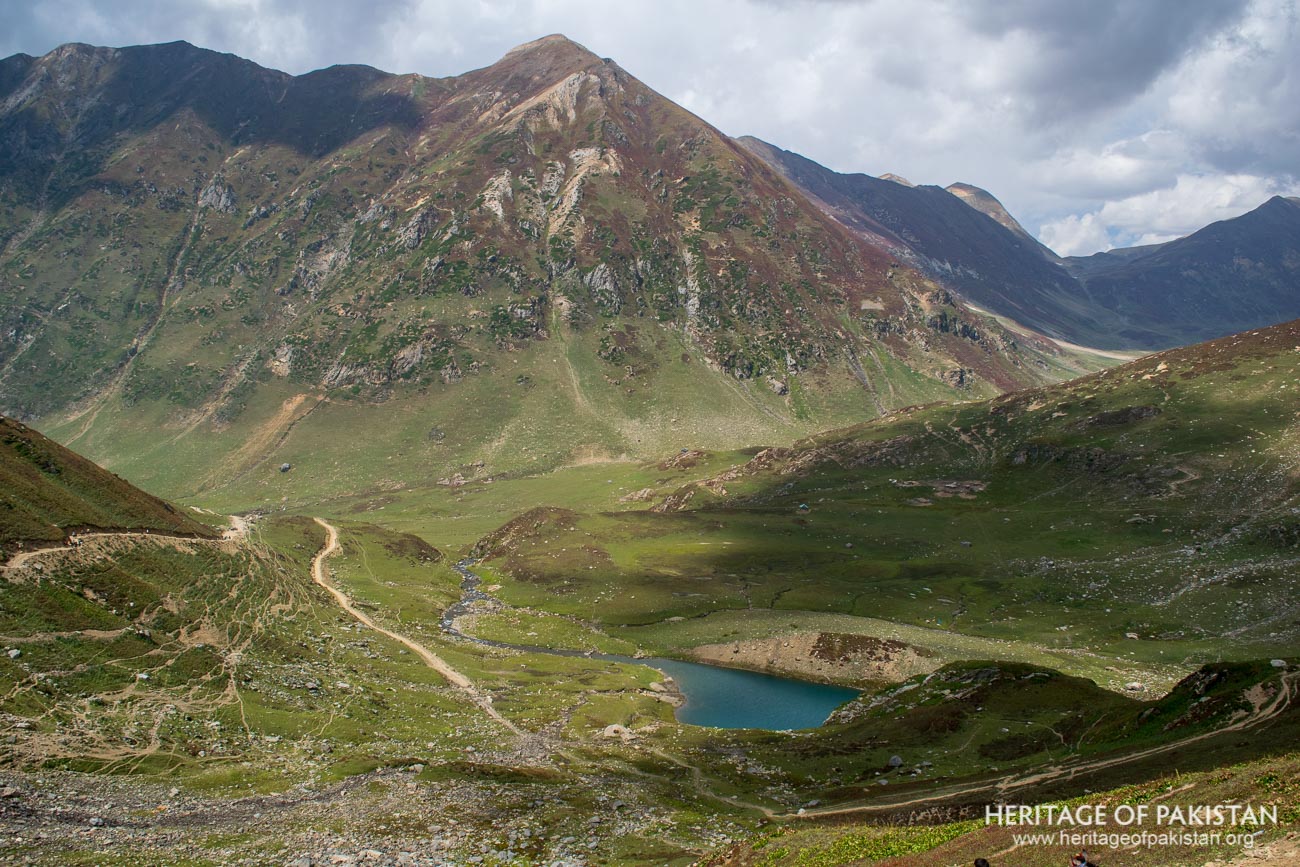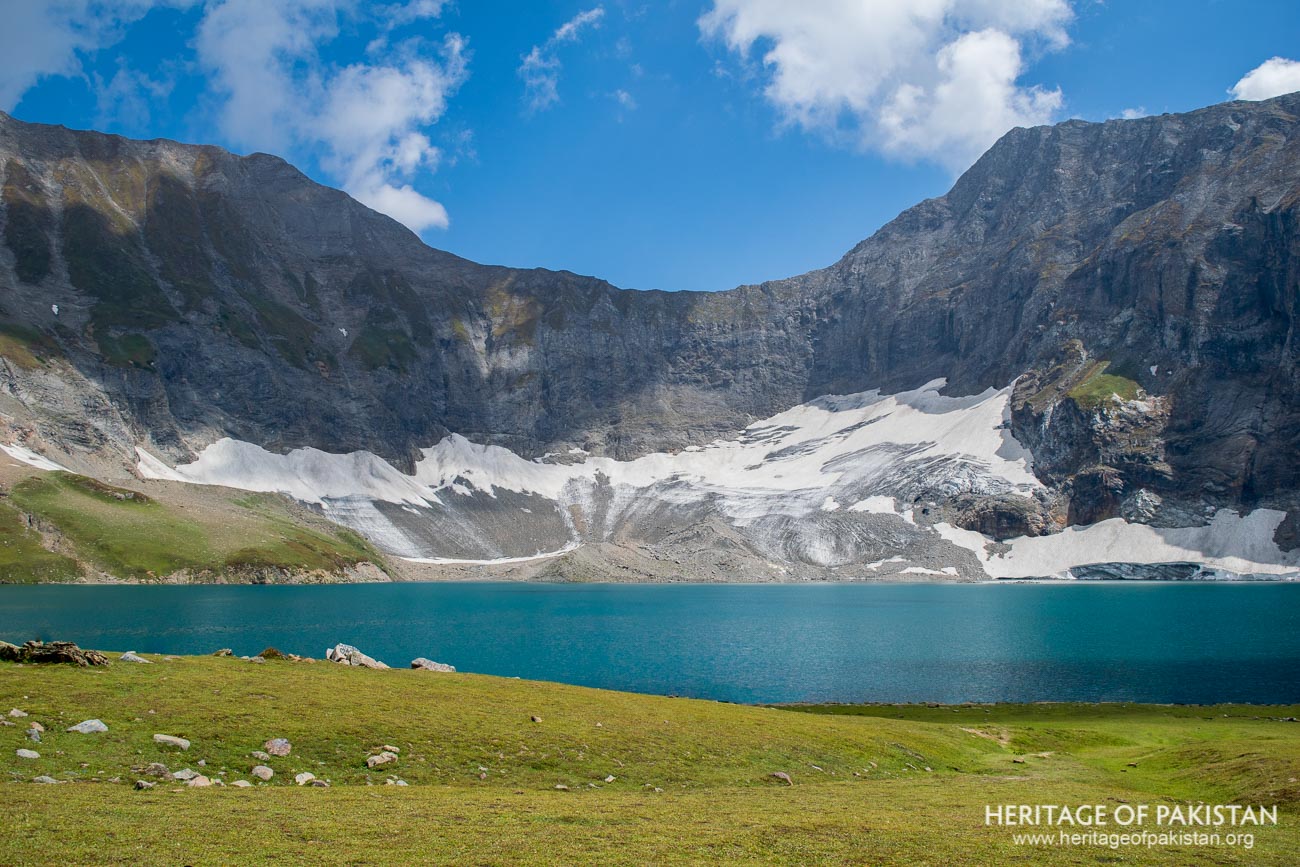Did You Know?
Ratti Gali Lake is situated at an altitude of 3,674 meters (12,056 feet) above sea level
34°49'36.4"N 74°03'44.5"E
Ratti Gali Lake is situated at an altitude of 3,674 meters (12,056 feet) above sea level
The Best Time to Visit Azad Kashmir Region is Summers. Preferably from April to September. Winters are Extremely Cold and Snowfall blocks most of access. Hence Winters are not recommended.


Ratti Gali Lake is a beautiful high altitude glacial lake located in Neelum Valley, Azad Kashmir. Located in the Western Himalayan Range, it sits at an elevation of 3,674 meters (12,056 feet) above sea level and covers an area of approximately 0.86 square kilometers. Enclosed by towering mountains on three sides, the cliffs act act as a backdrop to the emerald color lake. A vast meadow, covered with colorful wildflowers during the summer months, stretches out in front of the lake, enhancing its natural beauty. Ratti Gali Lake is considered one of the most beautiful destinations in Neelum Valley.
Tourists generally arrive at Keran, Neelum Valley to settle and spend the night. From Keran the lake is primarily accessed through Dowarian, a small settlement 10 km from Keran. From here, an 18-kilometer jeep track connects the main road to the lake. This track, however, is not for the faint-hearted. The rugged and treacherous terrain demands skilled local drivers who are familiar with its challenges. The journey itself is an adventure, offering breathtaking views of surrounding valleys, waterfalls, terraced fields, and mountain villages. For those seeking to trek to the lake, a trekking route from Dowarian provides an alternative path to the lake. The trek, though demanding, allows visitors to fully appreciate the area's natural splendor. This is only recommended for experienced trekkers.
A temporary tent village, set up near the lake by locals, caters to the needs of visitors. It has become a basecamp for the lake. This makeshift settlement offers essential facilities, including food and refreshments. Jeeps bringing the tourists from Keran are parked here. Mules and horses can be hired from this camp for those wishing to avoid the strenuous final hike to the lake. This final segment of the journey is quite steep. Despite its modest infrastructure, the camp enhances accessibility and ensures visitors can be provided with food and other essentials.
The beauty of Ratti Gali Lake changes with the seasons. In summer, the lake is surrounded by lush greenery and vibrant flowers, while in winter, it is enveloped in snow, presenting a completely different yet equally mesmerizing spectacle.
Ratti Gali remains a must visit destination in Neelum Valley, offering an escape into the untouched beauty of Azad Kashmir's highlands. This must be included on one's list of places to visit when touring Neelum Valley.


Ratti Gali Lake is located in the Western Himalayan Range of Pakistan and displays unique Himalayan alpine flora due to its high altitude, distinct geography, and alpine climate. Positioned at an elevation of 3,674 meters (12,056 feet) above sea level, the lake spans approximately 0.86 square kilometers (862,815 square meters). The surrounding area is rich in vibrant wildflowers, adding to the lake's scenic appeal.
The region is home to 99 plant species, representing 36 families and 77 genera. Among these, Asteraceae is the most dominant family, comprising 14 species, followed by Rosaceae with 9 species, and Polygonaceae and Boraginaceae with 6 species each. These plants contribute to the unique biodiversity of the area, making it a remarkable alpine ecosystem.
Ratti Gali Lake is encircled by towering mountains and cliffs on three sides, forming a natural bowl like structure. These peaks are often snow-capped, adding to the lake's stunning visual appeal. The lake is fed by meltwater from nearby glaciers and snowfields, and several glaciers in the area are visible to visitors on their jeep journey.
Despite its natural beauty, the fragile environment of Ratti Gali is under serious threat. The increasing influx of tourists, overgrazing, unsustainable harvesting of medicinal plants, and soil erosion are putting immense pressure on the lake’s ecosystem. Conservation efforts are urgently needed to protect this delicate habitat.
During winter, the area experiences heavy snowfall and remains snowbound from November to March.


Discover the Ratti Gali Lake image gallery and immerse yourself in photographs

All Photographs by Syed Noor Hussain and Sania Azhar.
All Rights Reserved. Photos may be used for Non-Commercial, Educational, Artistic, Research, Non-Profit & Academic purposes.
Commercial uses require licensing agreement.


Add a review